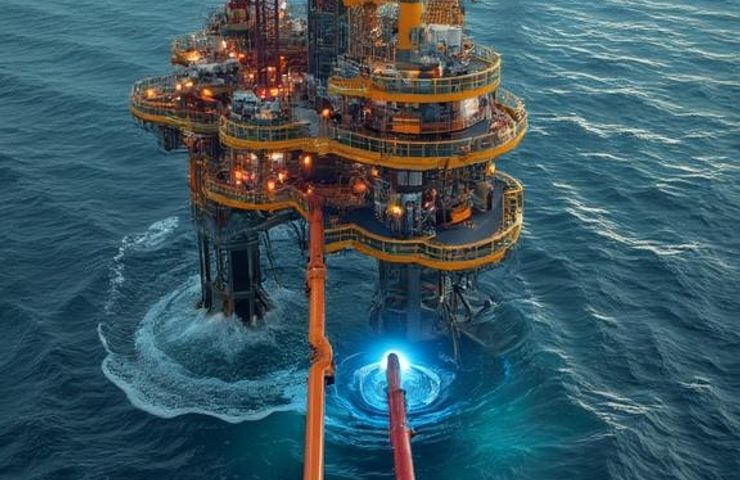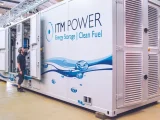
Bifrost CCS Project: A Game-Changer for CO₂ Storage in the Danish North Sea
October 13, 2025Ever wondered how heavy industry can actually slash its CO₂ footprint? Well, head about 200 km off Denmark’s coast and you’ll find the Bifrost CCS Project—one of the boldest carbon capture and storage Denmark efforts—just kicked into high gear. On October 2, 2025, TotalEnergies E&P Denmark made a power move, selling a 35% stake to CarbonVault, SCHWENK’s Danish arm. Now the lineup reads: TotalEnergies at 45%, CarbonVault at 35% and state-backed Nordsøfonden at 20%. Talk about a dream team. By teaming up government heft, industry muscle and cutting-edge tech, Bifrost is primed to capture and stash at least 5 million tonnes of CO₂ a year by 2030. This isn’t greenwash—it’s a straight-up game-changer for cement, steel and beyond, all in service of Denmark’s drive to cut emissions by 70% by 2030. Buckle up—this is carbon capture on a continental scale.
What’s Happening?
This farm-down isn’t just an equity shuffle. TotalEnergies CCS stays at the helm with 45%, bringing decades of North Sea know-how. CarbonVault jumps in with 35%, backed by its cement-sector network and project-building chops. And Nordsøfonden holds 20%, making sure public interests and Denmark’s climate roadmap stay front and center. Pending regulatory thumbs-up, the equity reshuffle won’t slow down ongoing seismic surveys, reservoir modelling or platform upgrades. In plain English: the first CO₂ injection is still slated for before 2030.
Why It Matters
Heavy industry is no small fry—it’s nearly a third of EU CO₂ emissions, and cement alone clocks in at about 7% of the global total. By guaranteeing storage space for 5 million tonnes annually, the Bifrost CCS Project offers a lifeline to Europe’s hardest-to-abate sectors. Denmark’s North Sea already boasts a maze of pipelines, platforms and wells just begging for a second life. Repurposing that kit slashes costs and speeds everything up. With Denmark gunning for a 70% emissions cut by 2030 and the EU eying Net Zero, Bifrost fits like a glove.
The Magic Ingredient: CCS Technology
At its core, this project leans on proven Carbon Capture and Storage (CCS) tech. Here’s the five-step dance:
- Capture: Snag CO₂ right at the source—think cement plants and steel mills.
- Compression: Pressurize the gas for its journey.
- Transport: Ship it or pipeline it out into the North Sea.
- Injection: Pump the CO₂ into geological traps—depleted gas fields and the Dagny saline aquifer beneath the seabed.
- Storage: Seal it away in rock formations and keep tabs on it 24/7.
Between Harald East/West and Dagny, Bifrost spans roughly 2,118 sq km of prime North Sea CO₂ storage. Not too shabby.
Real-World Impact
For SCHWENK, it’s a no-brainer—future emissions get a guaranteed home, turning decarbonization headaches into a rock-solid business plan. But it doesn’t stop at cement: Denmark’s steel, chemical and refining players can all pool CO₂, share transport costs and tap into this offshore hub. The result? Companies hit their climate targets, Denmark earns carbon service revenues, and everyone breathes a bit easier.
Strategic Angle
This alliance ticks every box:
- TotalEnergies: Operatorship backed by decades of North Sea drilling and gas-processing skills.
- CarbonVault: Cement-sector expertise and a ready customer base.
- Nordsøfonden: Public-sector alignment with national policy.
By solving the “capture vs. storage” puzzle, investors can literally follow the value chain—plants built, pipelines mapped out, storage capacity locked in. Next up? Scoring those regulatory green lights, expected by year-end.
Zooming Out
Once, Denmark’s North Sea was all about oil and gas. Now, it’s gearing up to be Europe’s CO₂ vault. Bifrost slots right alongside Norway’s Northern Lights, the UK’s East Coast clusters and the Netherlands’ Aramis in a mega regional network—a true carbon superhighway under the waves. And there’s plenty of spin-off gold:
- Thousands of jobs—from engineers to field monitors.
- Fresh tech ventures: subsea sensors, digital twins, advanced monitoring systems.
- New export revenues from carbon services.
- A repeatable template for CCS hubs worldwide.
Sure, challenges like public acceptance, pricing frameworks and long-term monitoring remain. But with a consortium this strong, there’s every reason to believe they’ll tackle them head-on.
This isn’t just another offshore energy play—it’s a blueprint for deep decarbonization. With the Bifrost CCS Project, TotalEnergies, CarbonVault and Nordsøfonden are flinging open the doors to a low-carbon future. Picture a Europe where cement, steel and chemicals no longer belch CO₂ into the sky but lock it safely underground. That vision isn’t a pipe dream—it’s happening. Ready to ride the wave?



 With over 15 years of reporting hydrogen news, we are your premier source for the latest updates and insights in hydrogen and renewable energy.
With over 15 years of reporting hydrogen news, we are your premier source for the latest updates and insights in hydrogen and renewable energy.